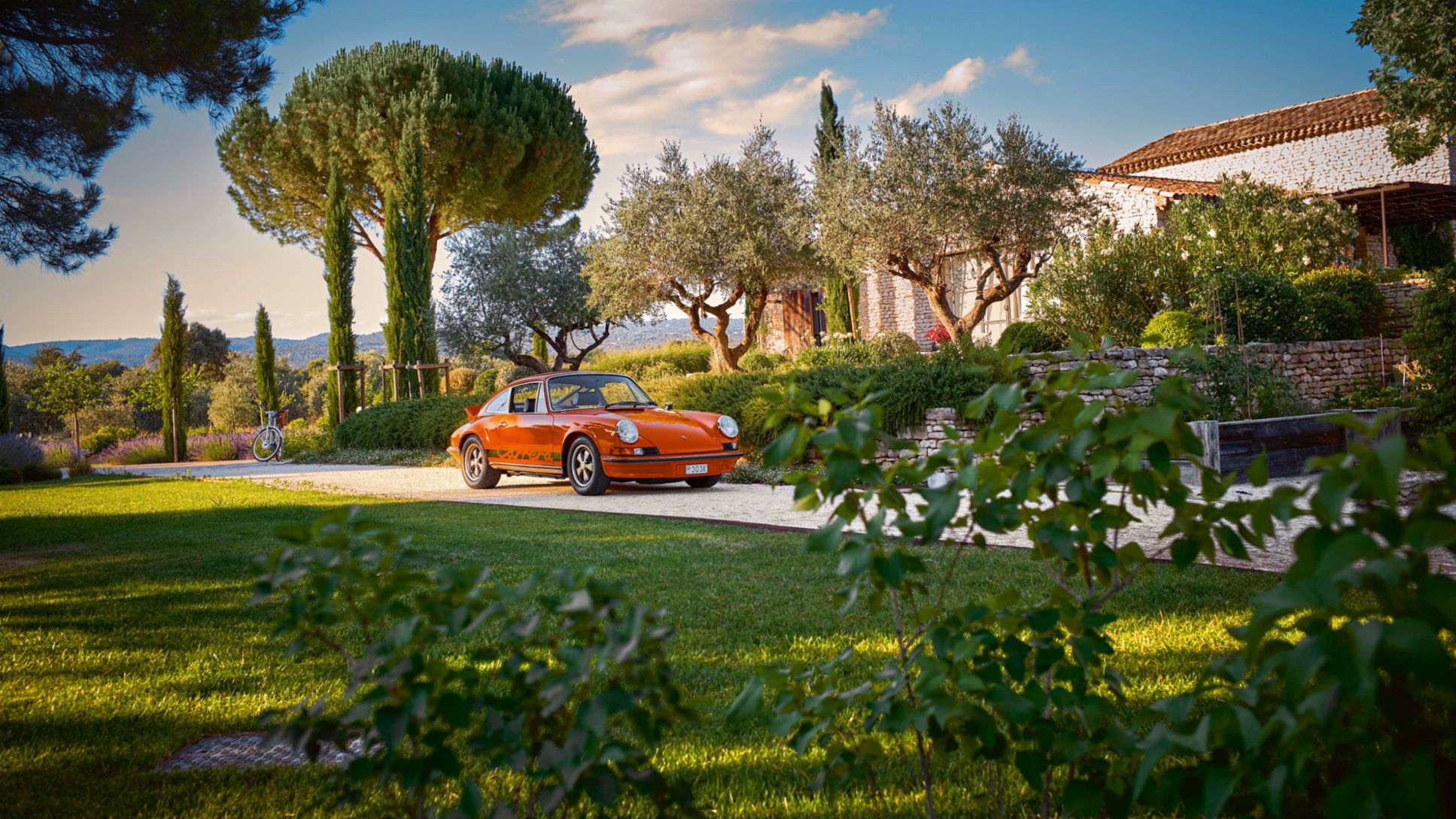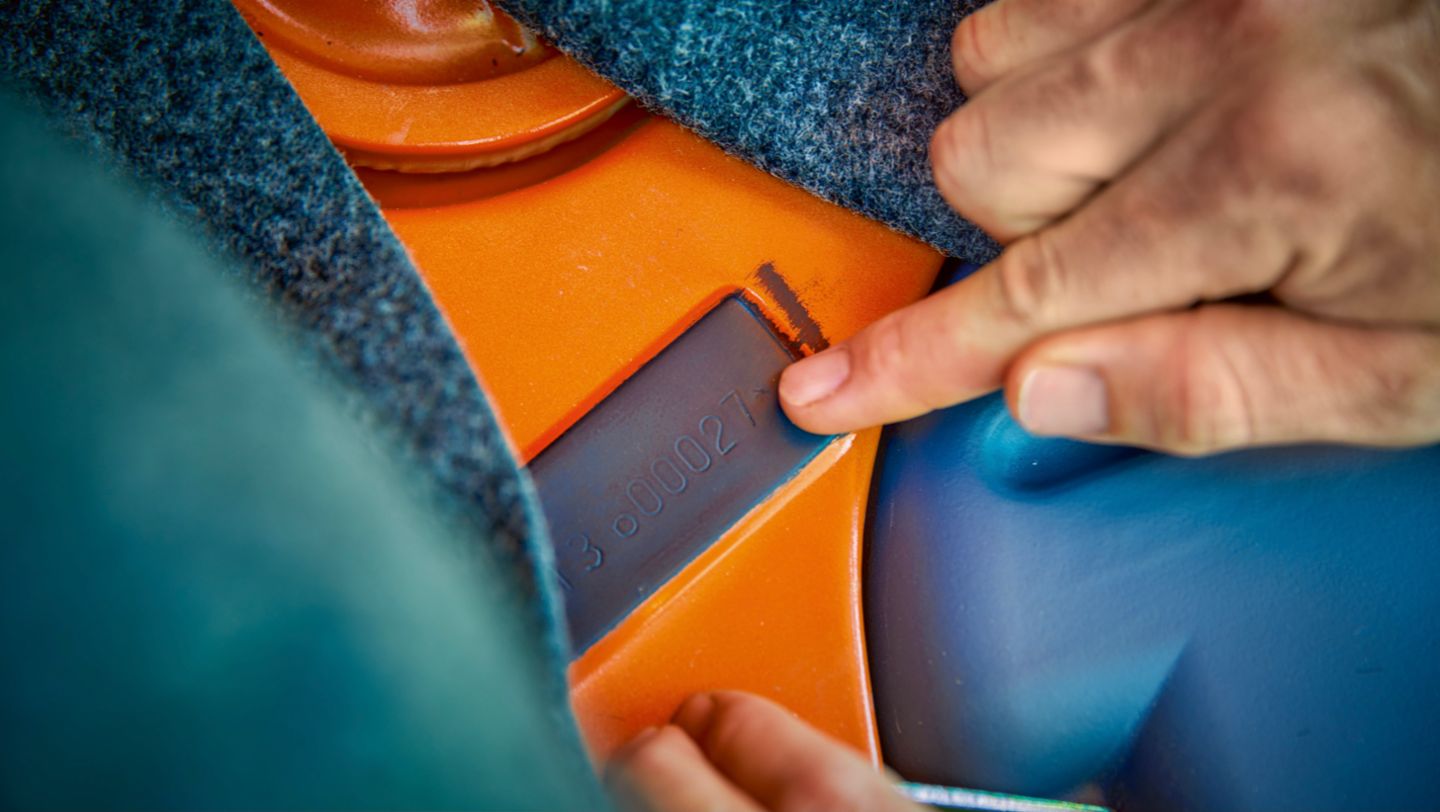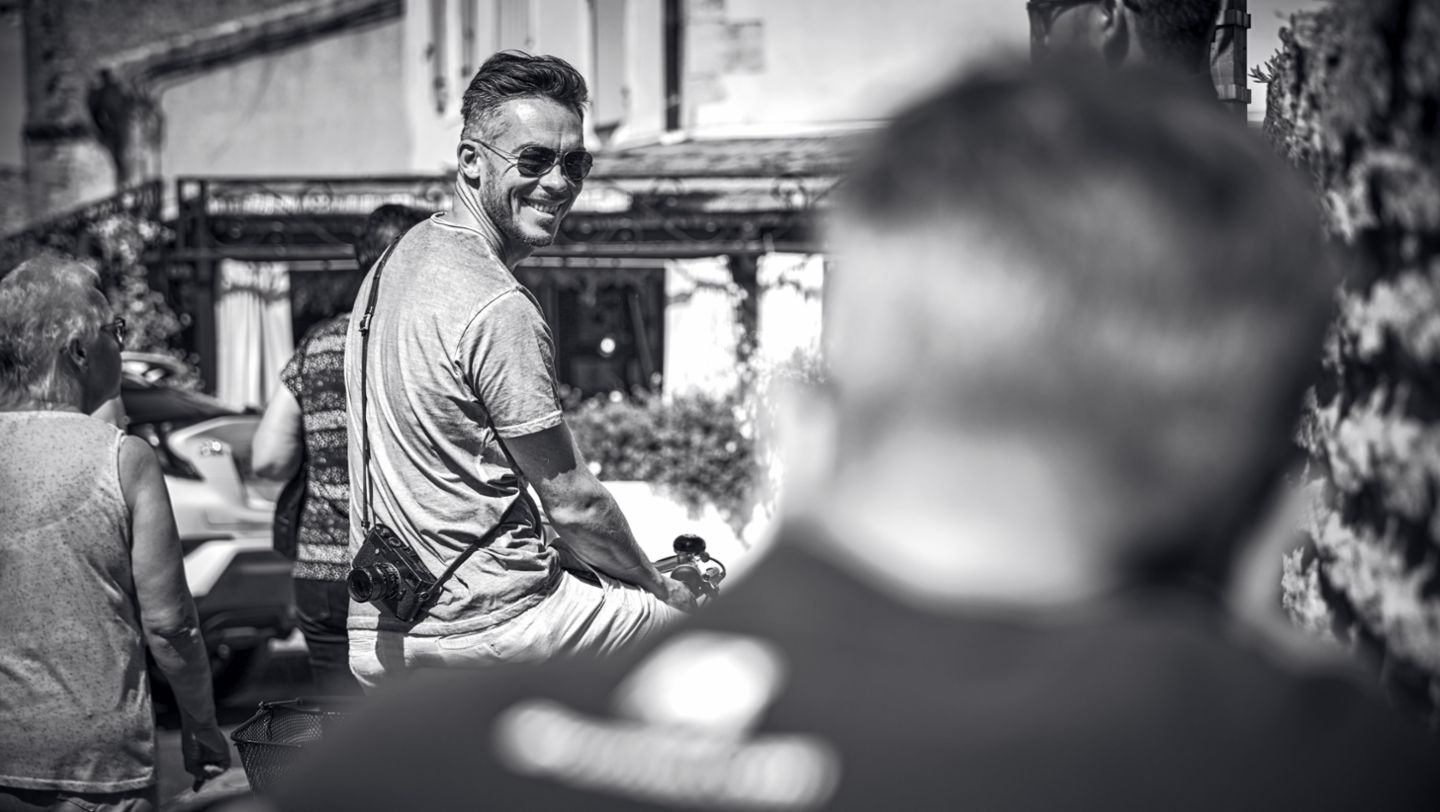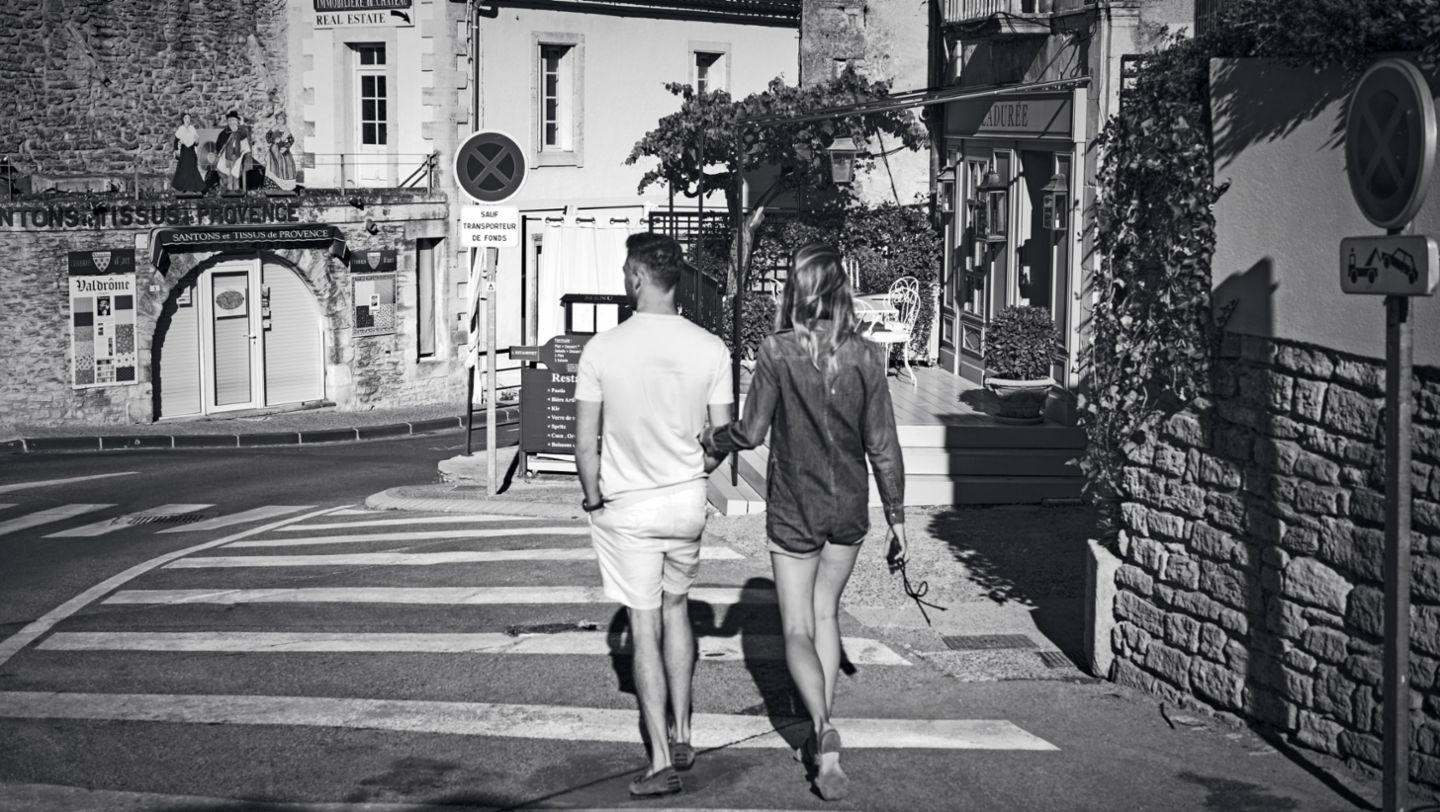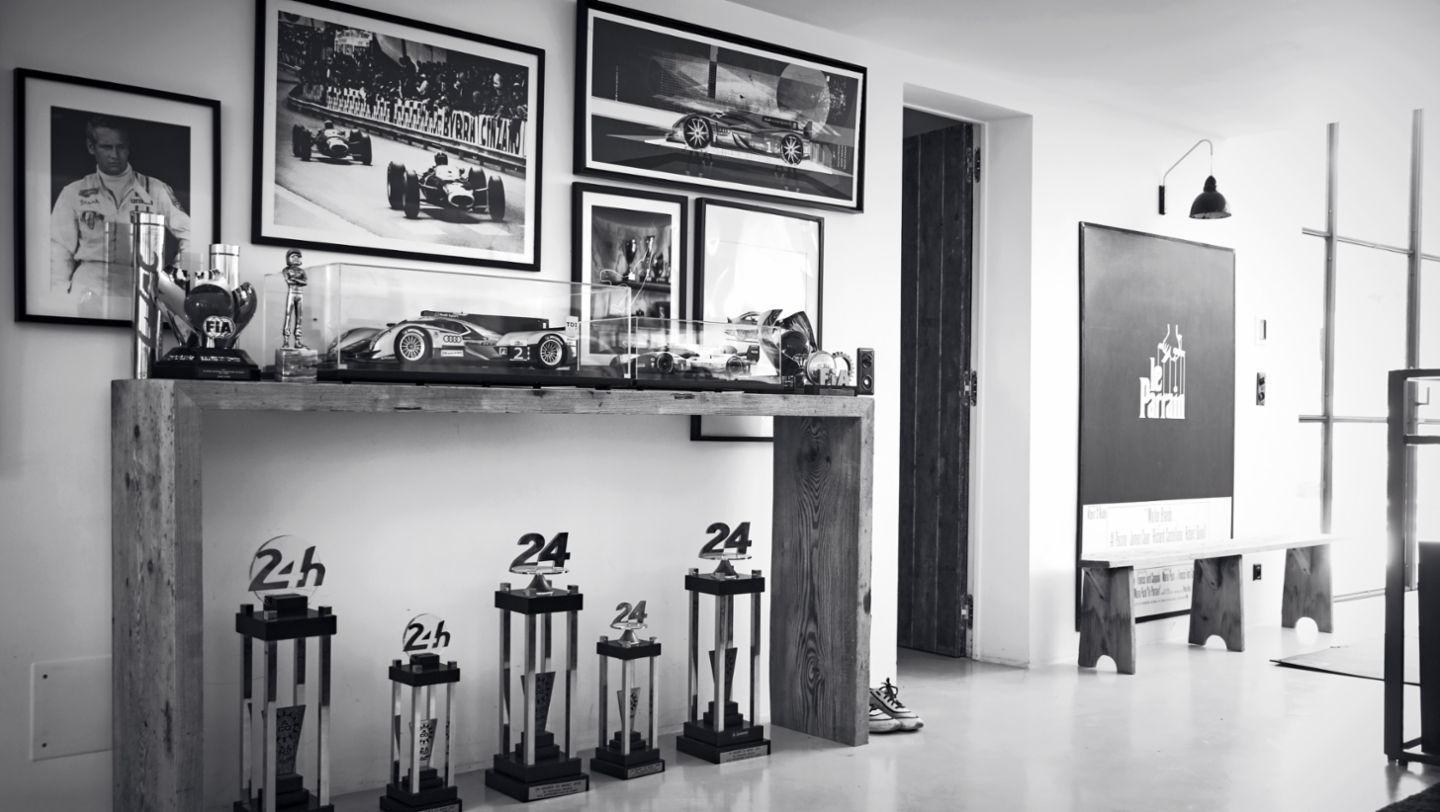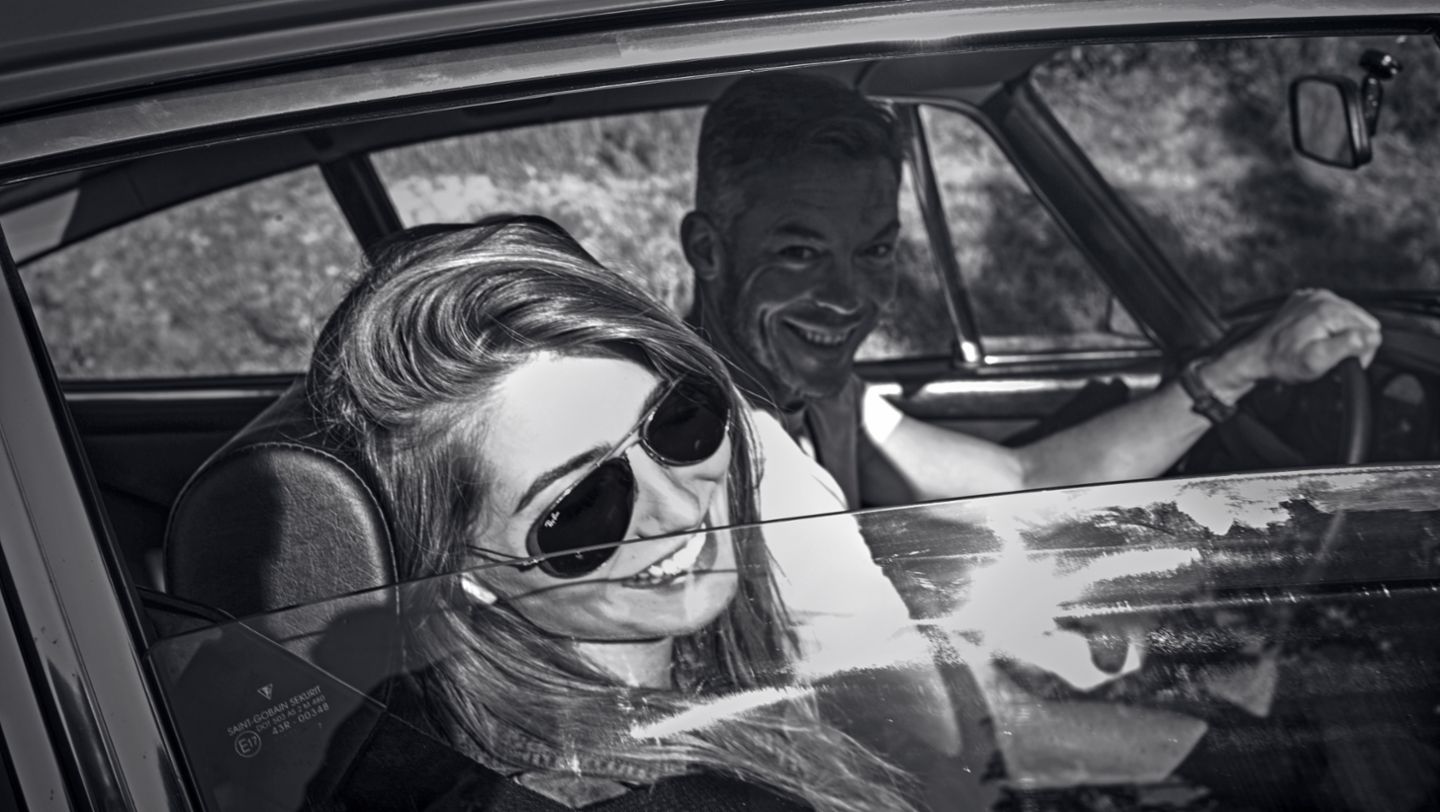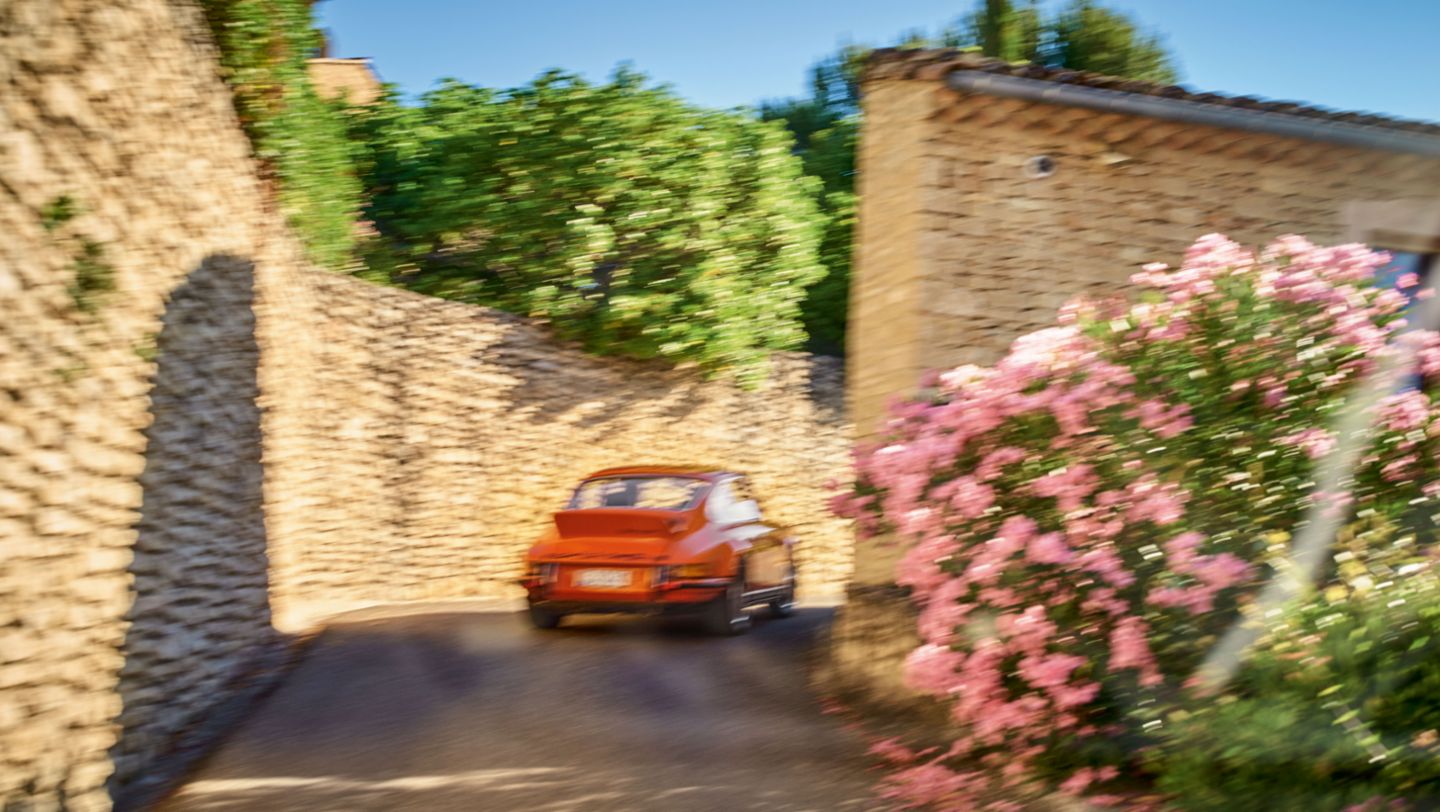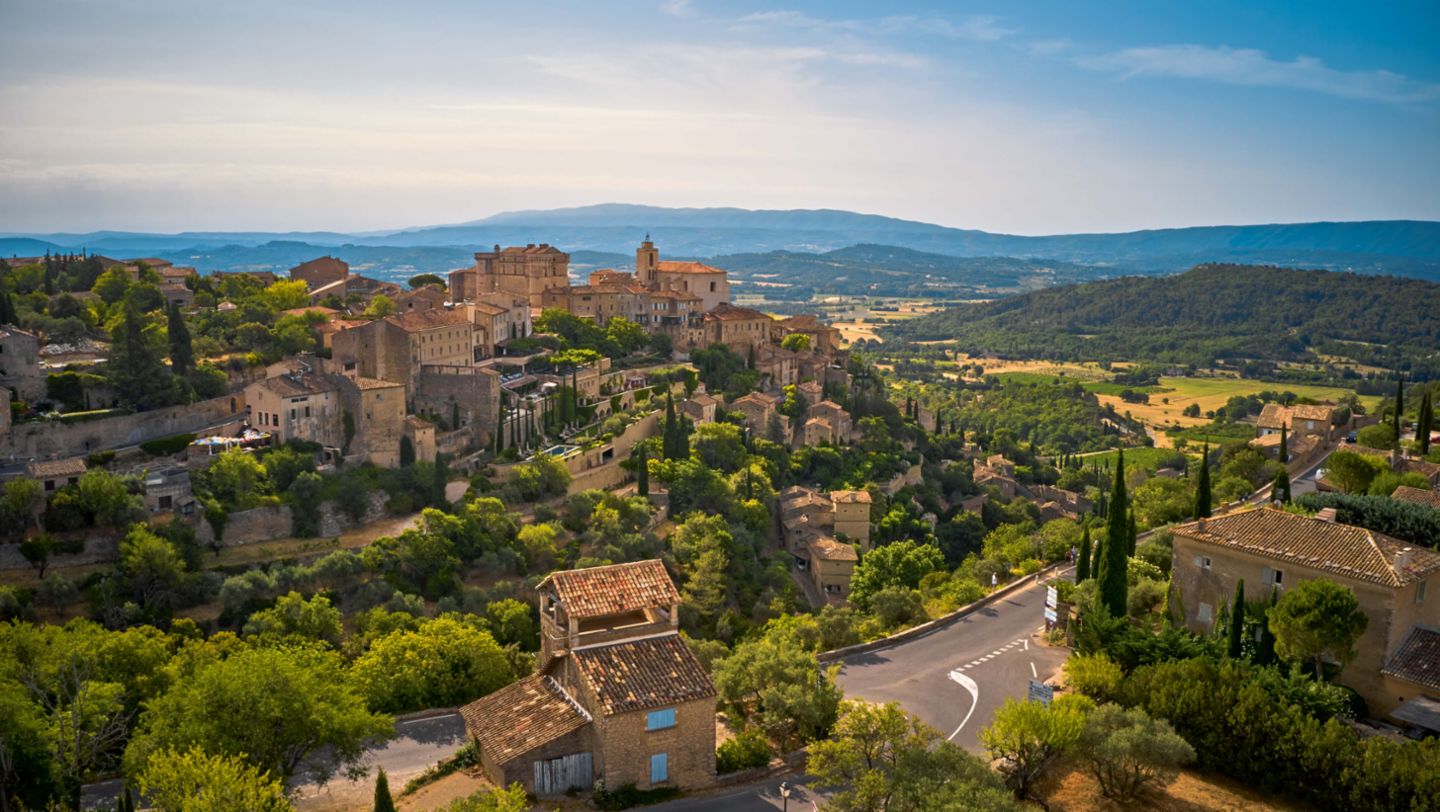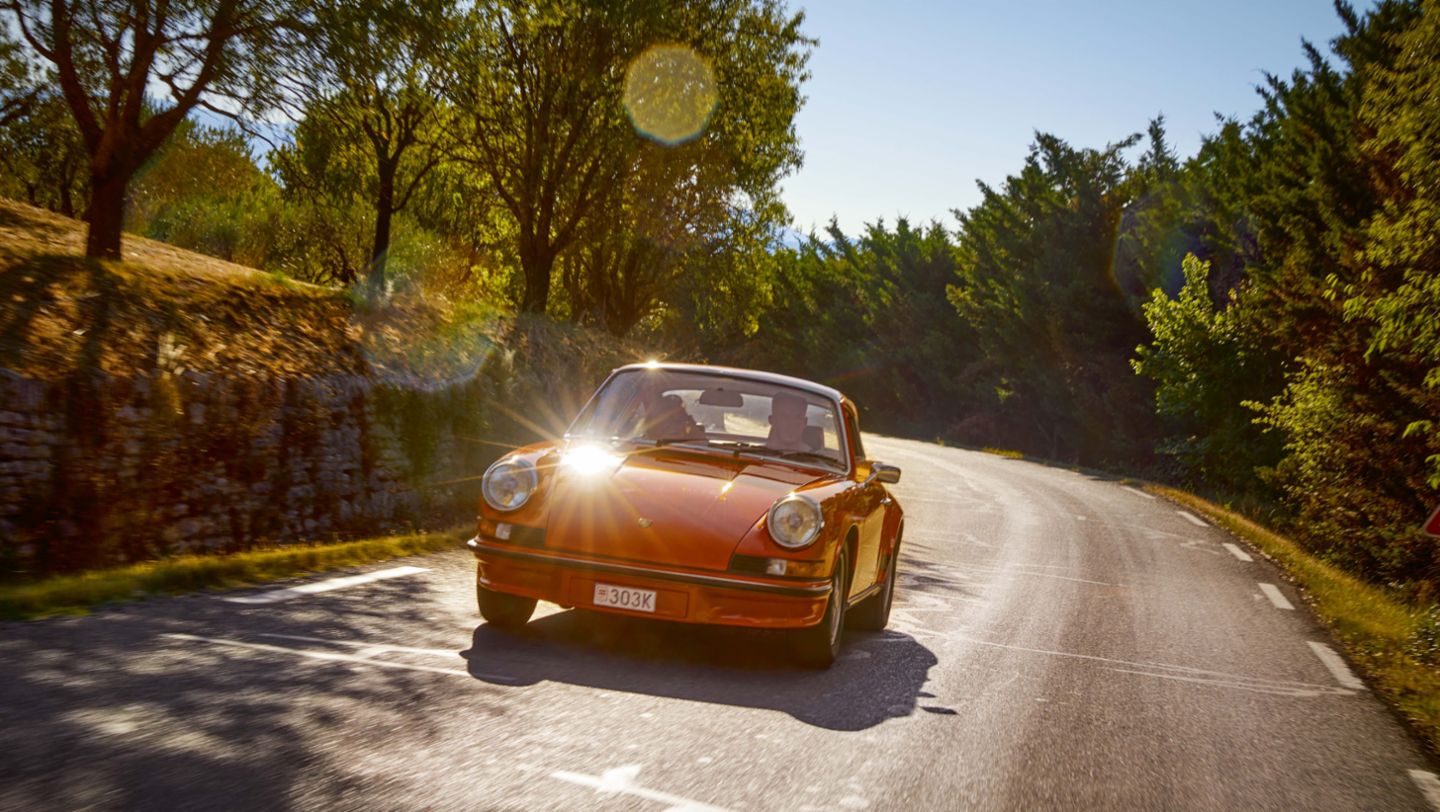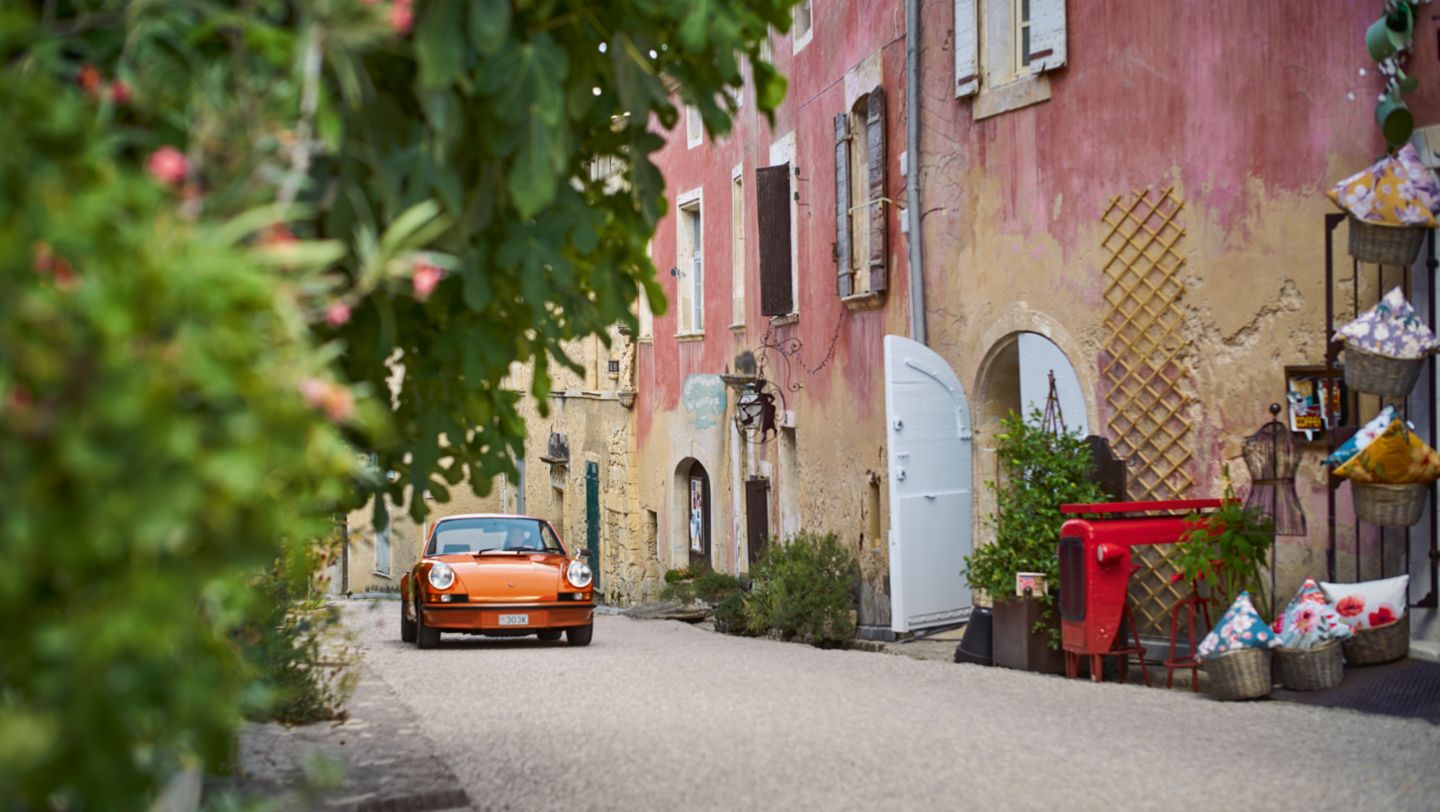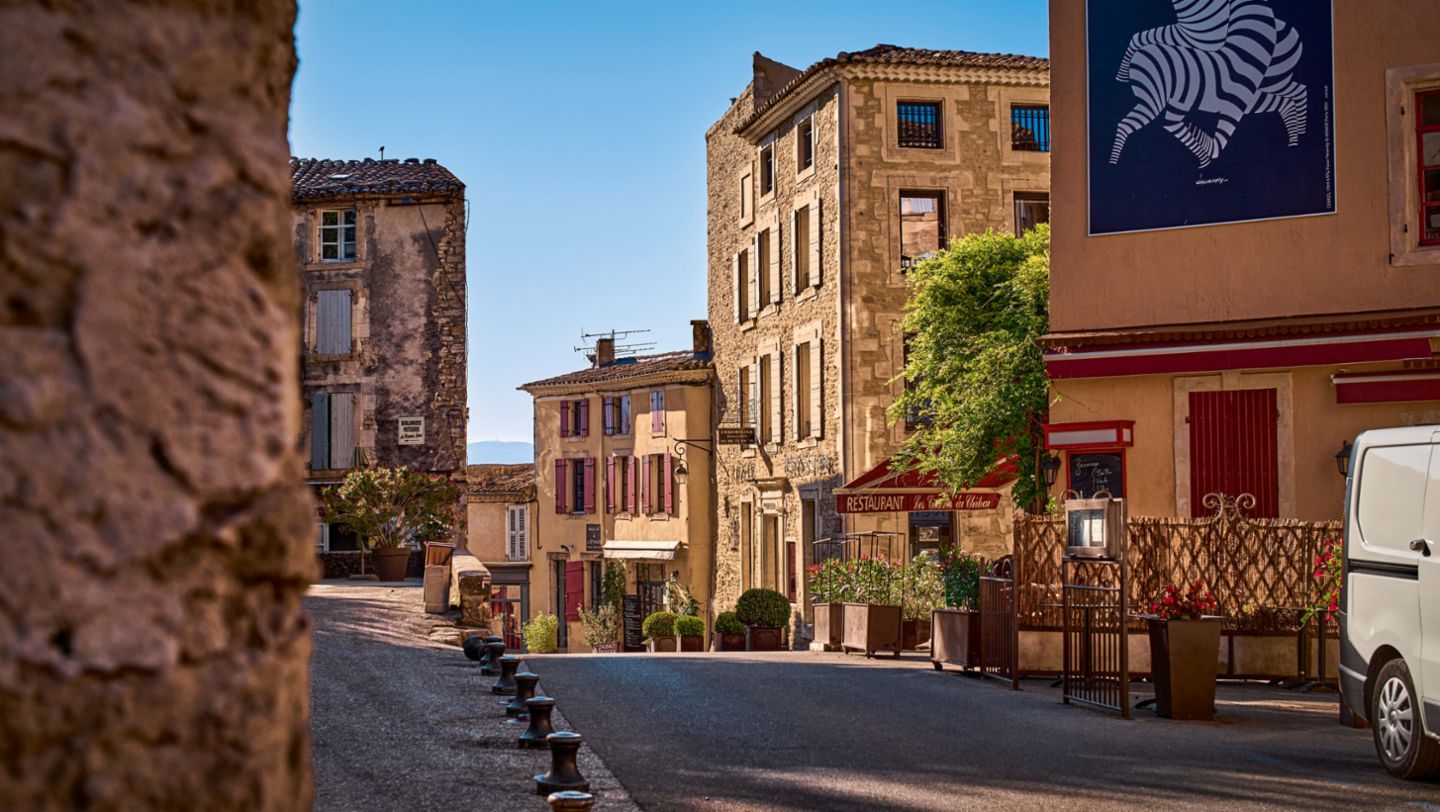The Blood Orange 911 Carrera RS 2.7 shines bright like the sun as the gate to André Lotterer’s estate opens. Once our eyes have had a chance to adjust, the full panorama of the race car driver’s vacation home appears before us like a Provençal dream, revealing lavender, cypress, and olive trees, and – at the end of the driveway – a building hailing from a bygone era. Welcome to the outskirts of Gordes, a village located high on the hill, unveiling its 1,000-year-old history from afar. Welcome to the home of André Lotterer, Porsche works driver and owner of a special RS 2.7.
Christopher, patron saint of travelers, was sympathetic during this meeting too, as research into one of these rare 911s brought us not only to the Provence-Alpes-Côte d’Azur region of southern France, where Lotterer has created an oasis of calm far from the world of racing, but also to the RS model with the very special chassis number 0027.
Living life like a race car driver
Our host welcomes us at the garage door with a big smile on his face. We explore the expansive landscape, with the continuous chirping of crickets and playful barking of two Labradors in the background. Lotterer serves us cappuccinos with almond milk a short time later, and we have the opportunity to view the many exhibits from the 40-year-old’s motorsport career inside the house, which includes racing helmets on shelves, photographs of numerous racecourses around the world, and shiny, golden Le Mans trophies. In 2011, 2012, and 2014, the race car driver took the overall win in the legendary endurance races, at that time as part of the Joest Audi Sport team.
Lotterer falls into the leather couch. Just yesterday he was at the Goodwood Festival of Speed, where his switch to the Porsche Penske Motorsport LMDh team was announced. He’ll be driving the new Porsche 963 on the Le Mans and other courses in the coming season. It’s the latest post for the versatile driver, who to an extent has motorsport in his DNA: go-kart world champion at the age of 13, Formula 3 driver, Formula 1 test driver, Super Formula Championship driver, World Endurance Champion, and – since 2017 – works driver for Porsche in Formula E. “I enjoy the diversity,” says Lotterer, who was born in Germany, grew up in Belgium, and speaks five languages fluently. “Whether I’m driving classic cars in Goodwood, which I did yesterday, or a Formula E race car in Marrakech, which I’ll be doing tomorrow.” You might even say he has made all of his motorsport dreams come true. “Not all of them,” Lotterer says, smiling. “There’s still a Le Mans win in a Porsche.”
Privately though, he prefers to dwell on his childhood dreams. “Driving a classic 911 is like a journey through time,” he says, his eye lighting up. There’s another racing event in the calendar today, sandwiched between Goodwood and Marrakech. The RS 2.7 is already waiting.
A short time later, we find ourselves in a field of lavender measuring around two hectares in size, and marvel at the rare RS model. It’s a hot day, 35 degrees Celsius. Lotterer saw the car with the special chassis number at a Le Mans Classic auction in 2012 for the first time. There was no buyer that day, and the car was returned to the owner. But Lotterer took action soon thereafter. “I was still a little shy in Le Mans,” he says. “But I just couldn’t stop thinking about the car.” Thanks to a dealer friend of his who knew the owner, he was given a second chance. “At that time, the RS was painted green and had yellow wheels,” he says. “It belonged to a Swiss guy, who had had it modified for mountain racing.” Lotterer then did some research, as he wanted the 911 to look exactly like it did back then, when it rolled off the production line with chassis number 0027 – on October 27, 1972, of all days.
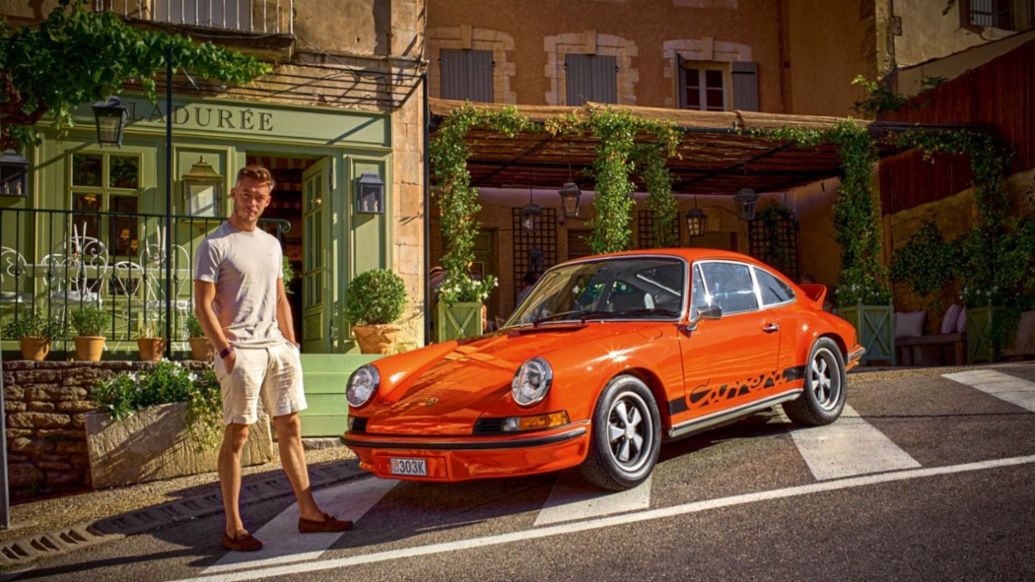
That was 50 years ago. Back then, Ferdinand Piëch, Porsche’s Chief Technology Officer, had a special trick up his sleeve, which was to develop a special 911, later with the “Carrera” add-on. A vehicle that was consistently developed for motorsport, but street-legal. At least 500 units had to be built, as that was the number of vehicles necessary to homologate the car in Group 4 for special GT vehicles. There was little hope that anyone would be willing to spend money on a 911 fitted out in this way. There was even contention about the design with the now-iconic rear spoiler – christened the ducktail – as it interrupted the 911’s otherwise flawless fastback. But the performance was outstanding.
Birth of an icon
“Here you go. This is a very fast car,” wrote Christophorus in issue 119. “0 to 100 kmh in 5.8 seconds. 2.7 liters with 210 PS, but entirely street-legal. Wider and with aerodynamic finesse: a ducktail rear spoiler that alone increases speed by 5 kmh.” The light vehicle weighed in at just 960 kilograms. In the homologated version, the 911 was only allowed a maximum of 900 kilograms. The world’s first series production car with a front and rear spoiler celebrated its world premiere at the Paris Motor Show on October 5, 1972. The hype was sparked: within a short time, all units had been sold.
Despite another 500 RS 2.7 vehicles being produced, there were still loyal customers afterwards who vented their frustration at not having one of the coveted vehicles in their garage. It was a level of success that no one had anticipated. There were a total of 1,580 units of the 911 with ducktail by the end of the 1973 model year, split into four variants. In addition to 17 basic vehicles, Porsche produced a particularly sporty variant of which 200 units were built. The racing variant RSR 2.8 was produced 55 times and the more comfortable touring package was selected by 1,308 buyers.
Through Provence in the RS
André Lotterer is now driving one of these Touring RS models up the hill to Gordes. The imposing Château de Gordes, a fortress that towers over the surrounding, equally archaic houses, has dominated the village visually since the 11th century. Regional specialties such as cheese, nougat creations, and bags of dried lavender flowers can be found in the market. Cruising in the legendary RS through this Provençal landscape steeped in history, it feels like we’ve travelled back in time.
“It took nine years to restore the car,” says Lotterer, as passersby turn around to admire the orange-colored object. “But original condition was a must for me.” In other words, an original steering wheel and the classic seats had to be located. The green paint was removed, the body submerged in an EPD bath, and the engine sent to a specialist in Belgium. And the rear spoiler needed to be replaced. “There was already one there, but it was a replica,” explains Lotterer. “That’s not acceptable, of course.”

An original ducktail now sits proudly at the rear, and the RS is back to its original condition, including its former color, Blood Orange. Original throughout? “Not entirely,” admits the race car driver with a mischievous smile. “I wanted a little more sound.” Lotterer steps on the gas as they leave the city behind them, the setting sun creating a picturesque backdrop. “Can’t you hear the sport exhaust?”
Info
Text first published in the Porsche magazine Christophorus, No. 404.
Author: Matthias Kriegel
Photos: Frank Kayser
Copyright: All images, videos and audio files published in this article are subject to copyright. Reproduction in whole or in part is not permitted without the written consent of Dr. Ing. h.c. F. Porsche AG is not permitted. Please contact newsroom@porsche.com for further information.
